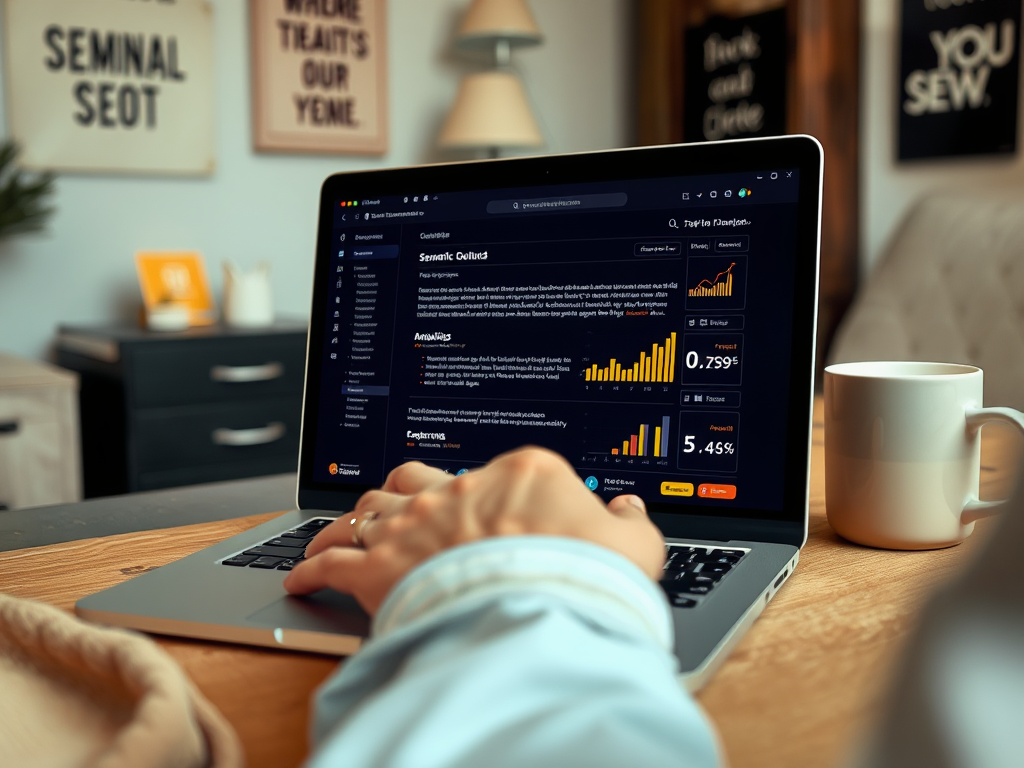In a digital landscape saturated with information, standing out requires a nuanced approach to search engine optimization. Traditional SEO, driven largely by keyword density, has evolved, making way for its sophisticated cousin: semantic SEO. This approach emphasizes the importance of understanding user intent and context, allowing content creators to produce material that resonates more deeply with their audience. By discovering what users are truly seeking, brands can craft content that is not only relevant but also engaging, significantly boosting their visibility in search engine results. As search engines become smarter, aligning your content with the fundamental principles of semantic SEO becomes imperative to stay competitive. One must delve into the intricacies of user queries to decipher their underlying motivations for seeking particular information or solutions.
The landscape of SEO is continuously changing, influenced by advancements in artificial intelligence and natural language processing. With these developments, search engines now prioritize understanding the context of searches over mere keyword matches. Semantic SEO allows marketers and writers to create nuanced, informative content that caters specifically to different types of user intent. Grasping how users interact with search engines opens the door to creating more effective content strategies. The benefits extend beyond mere visibility; they encompass improved user satisfaction and trust, which can significantly impact conversion rates. Therefore, a comprehensive understanding of semantic SEO is not just beneficial but essential.
What is User Intent?

User intent represents the motivation behind a search query. When a user enters a keyword into a search engine, they are seeking specific information, experiences, or actions. Understanding user intent is crucial as it guides the creation of content that directly addresses those needs. This concept can be categorized into three primary types: informational, navigational, and transactional intent. Content that aligns well with user intent results in lower bounce rates and higher engagement. By catering to these intents, brands can establish authority and foster trust in their audiences.
- Informational Intent: Users seek knowledge or answers to their questions.
- Navigational Intent: Users aim to locate a specific website or page.
- Transactional Intent: Users intend to make a purchase or complete some sort of transaction.
The Importance of Context in SEO

Context amplifies the relevance of content to a user’s query. Without context, even the most well-written article can become lost in the vastness of the internet. Search engines utilize context to prioritize which results best meet a user’s needs. Various elements contribute to context, and understanding these factors can dramatically enhance content effectiveness. Among these elements are search history, geolocation, and device type. Recognizing how these factors intertwine allows marketers to better tailor their content delivery.
| Element | Description |
|---|---|
| Search History | Refers to the previous search queries that may influence current results. |
| Geolocation | The physical location of users, which can shape the relevance of search results. |
| Device Type | Refers to whether the content is being viewed on a smartphone, tablet, or desktop, affecting user experience. |
Optimizing for context is more than just a technique; it’s an art form that involves understanding your audience at a deeper level. Including location-specific terms, behavioral data, and demographic insights into your content can significantly improve its relevance. Moreover, content should be adaptable to different platforms and devices, ensuring that it communicates equally well across the board. By creating a comprehensive profile of your target audience, you can anticipate their needs, further enhancing the content’s semantic accuracy.
How to Optimize Content for Semantic SEO
Optimizing content for semantic SEO requires a strategic approach. One way to start is by conducting thorough keyword research. However, unlike traditional methods, it should focus not only on primary keywords but also on related semantic phrases that align with user intent. To capitalize on this strategy, tools like Google Trends, SEMrush, and Answer the Public can be invaluable. After determining the right keywords and phrases, it’s imperative to create content that answers the questions users are asking, using a natural language that aligns with their searches.
- Use headings and subheadings to structure content and make it easier for readers to find specific information.
- Incorporate semantic keywords naturally into the text instead of stuffing them in awkwardly.
- Provide comprehensive answers, including examples, visuals, and data to enhance user understanding.
Another crucial aspect is the use of structured data. Implementing schema markup allows search engines to better understand your content’s context, which can enhance how your pages appear in search results. Such enhancements, such as rich snippets, can significantly improve click-through rates. Lastly, consistently updating and refining your content based on performance metrics can ensure its relevance and effectiveness over time. Even a successful article from a year ago can benefit from fresh insights and revisions.
Measuring the Success of Semantic SEO
Monitoring the effectiveness of semantic SEO efforts is essential for any content strategy. Key metrics to evaluate include organic traffic, bounce rates, and conversion rates. Changes in these figures can provide insight into how well your content aligns with user intent. For example, an increase in organic traffic signifies that your content is ranking better, while a lower bounce rate indicates that visitors are engaging more effectively with your material. Additionally, conversion rates will reveal how well your content is performing in terms of driving desired actions.
- Organic Traffic: Measure the increase in visitors from search engines.
- Bounce Rate: A lower bounce rate can indicate higher content relevance and satisfaction.
- Conversion Rate: Analyze how effectively your content converts visitors into customers.
Итог
Optimizing content for semantic SEO is not merely a technical task; it is an essential component of modern content marketing strategies. By understanding user intent and context, brands can create more meaningful connections with their audiences. This approach not only improves search visibility but also enhances user experience and trust. Refining content strategies, employing structured data, and monitoring performance metrics lay the groundwork for ongoing success in an ever-evolving digital landscape. In this way, semantic SEO becomes more than just a trend; it transforms into a critical practice for achieving long-term growth and engagement.
Часто задаваемые вопросы
- What is semantic SEO? Semantic SEO refers to optimizing content for search engines to understand the meanings behind words and phrases, emphasizing user intent and context over mere keywords.
- Why is user intent important? Understanding user intent is crucial, as it helps create targeted content that meets user needs, leading to higher engagement and conversion rates.
- How can I improve my content’s context for SEO? Focus on factors like search history, geolocation, and device types while creating your content to improve context.
- What tools can I use for keyword research? Use tools such as Google Keyword Planner, Moz, SEMrush, and Ahrefs to identify relevant keywords and semantic phrases.
- What is structured data and why is it important? Structured data is a standardized format that provides search engines with detailed information about a page, enhancing understanding and representation in search results.
